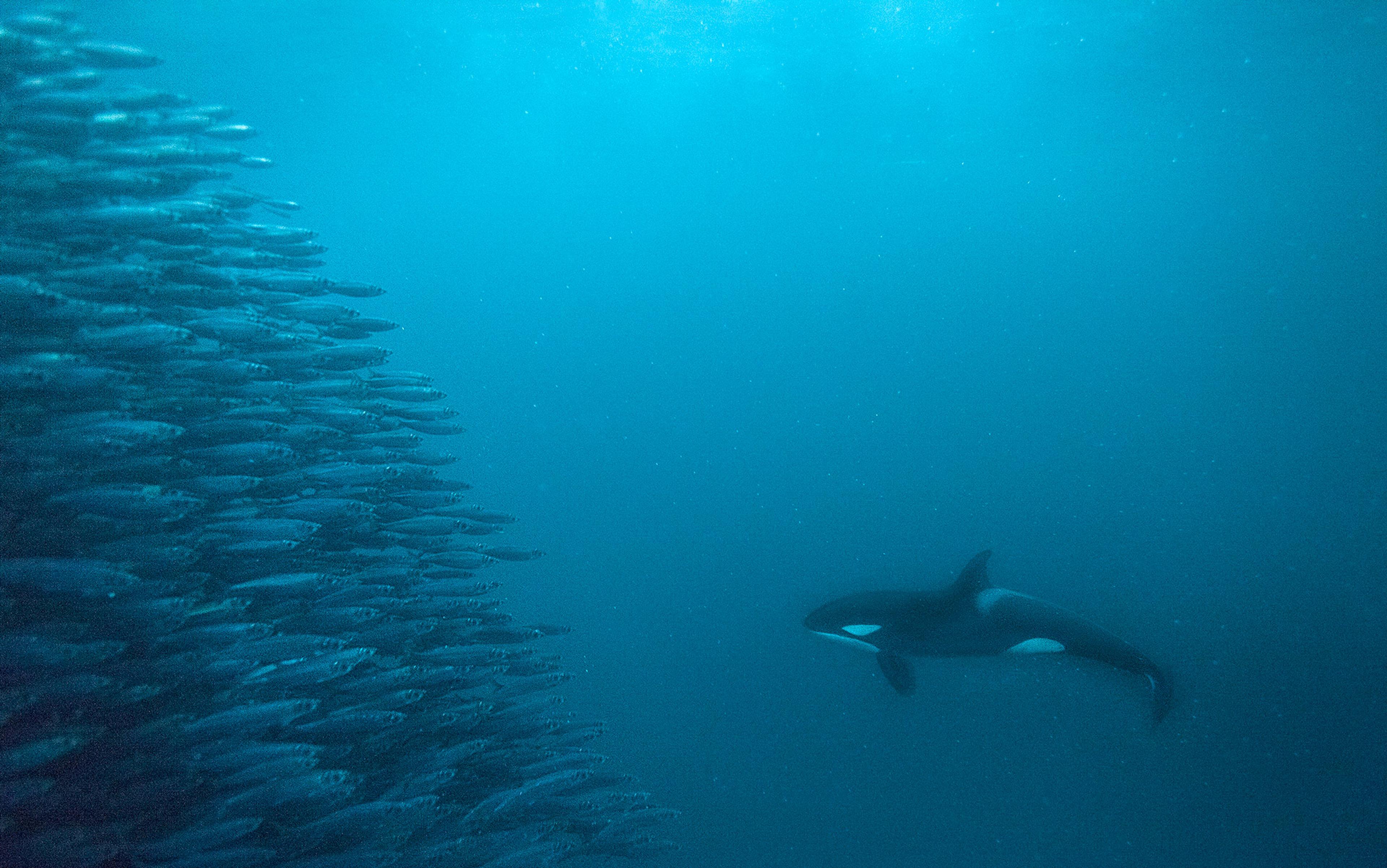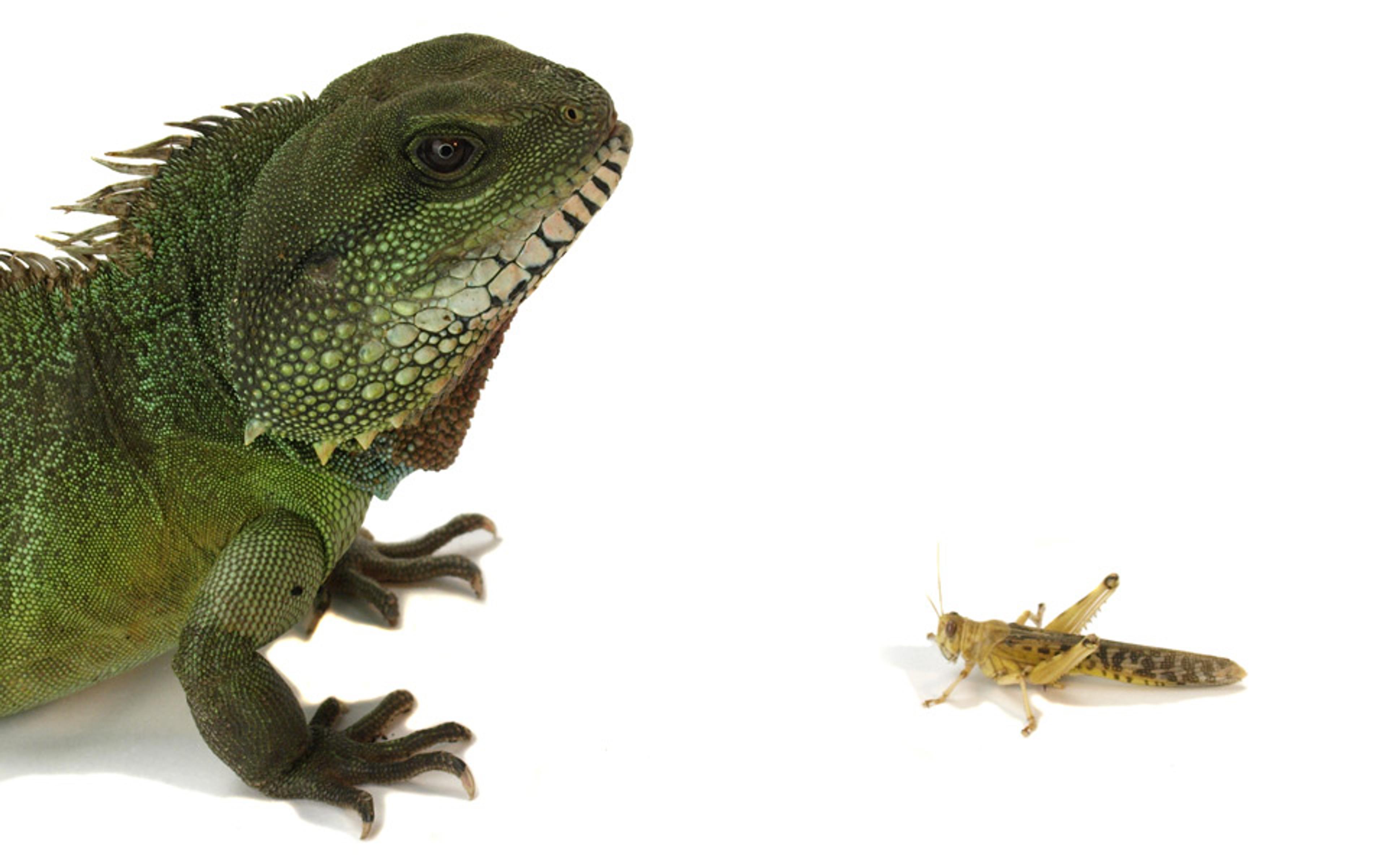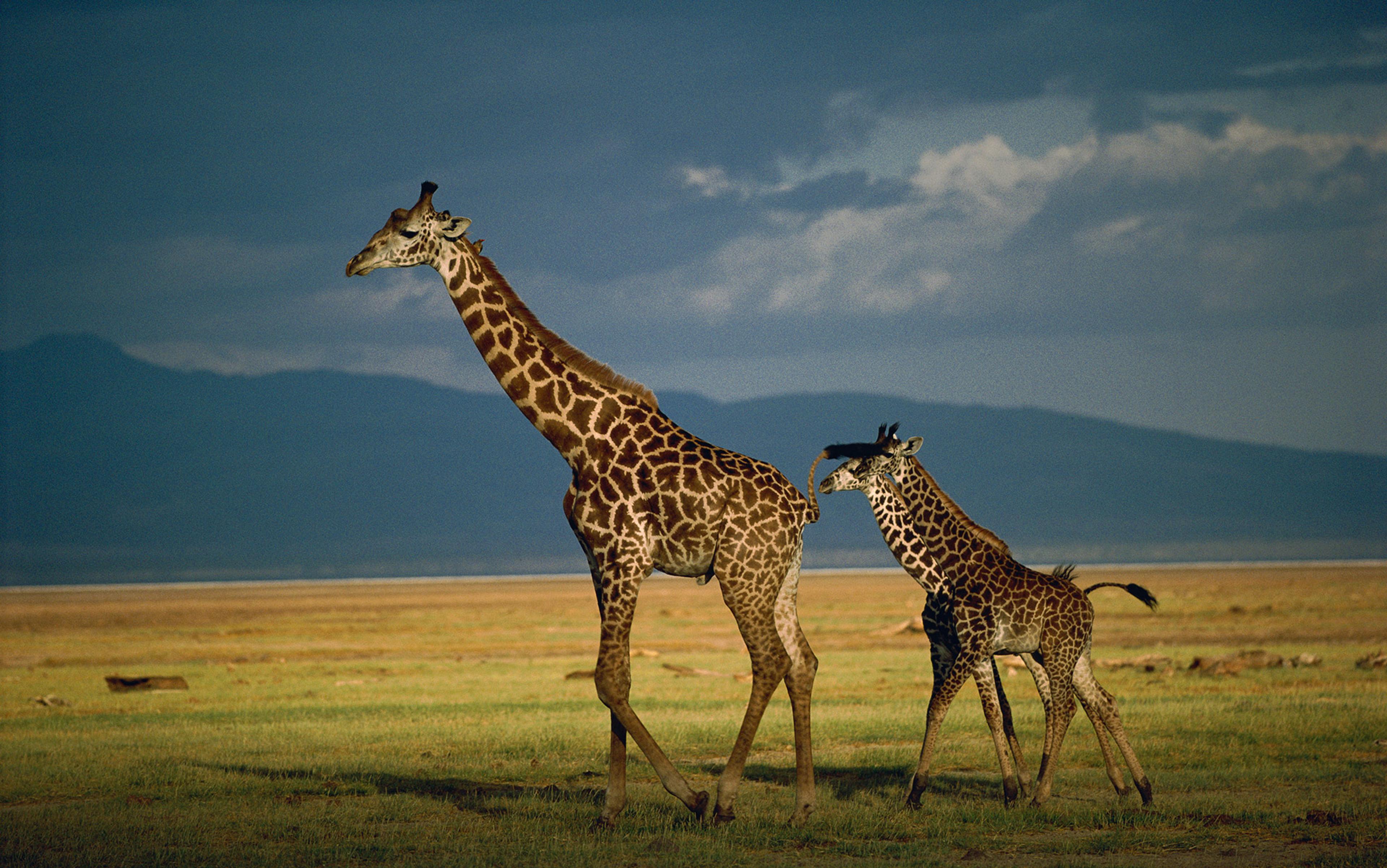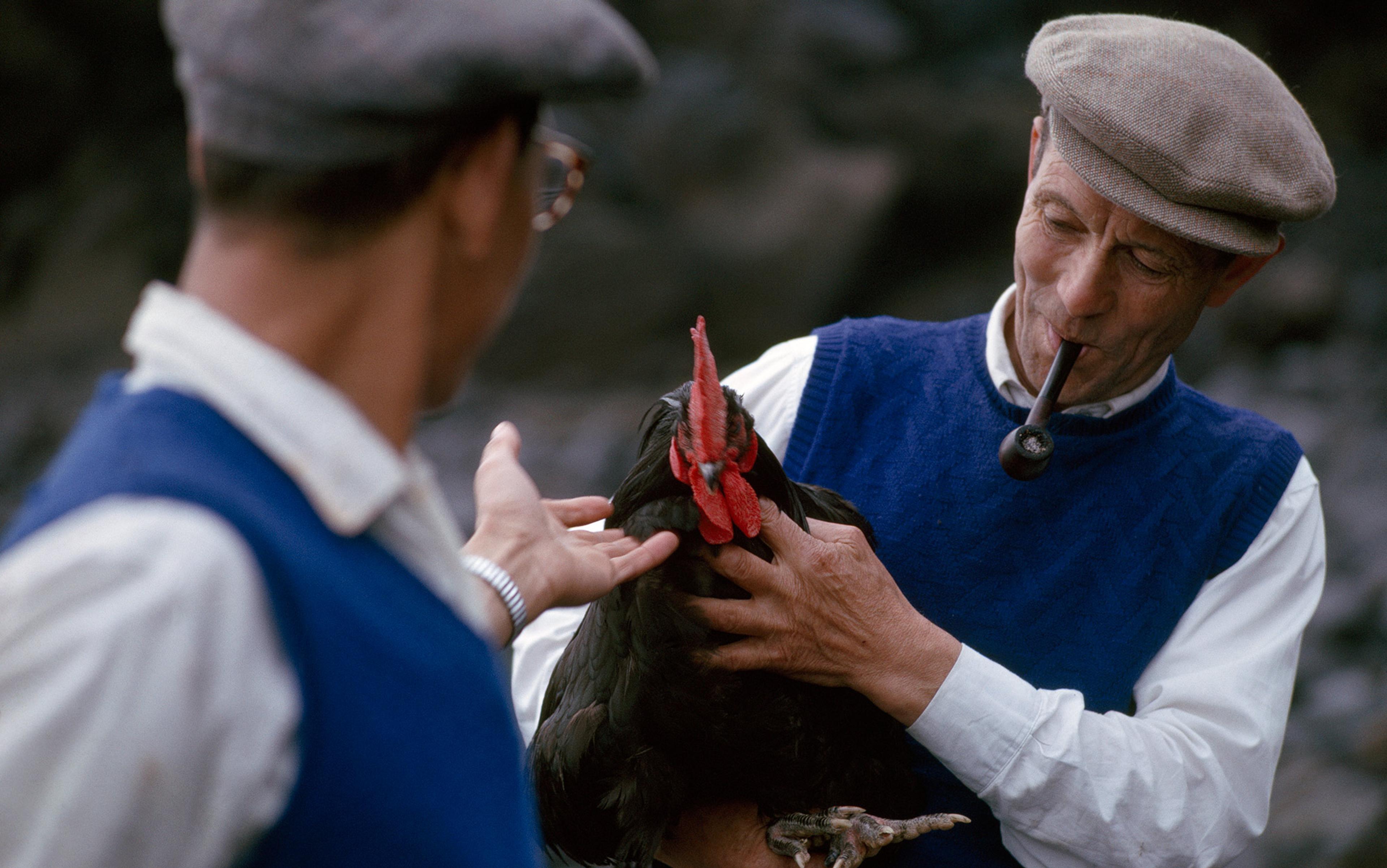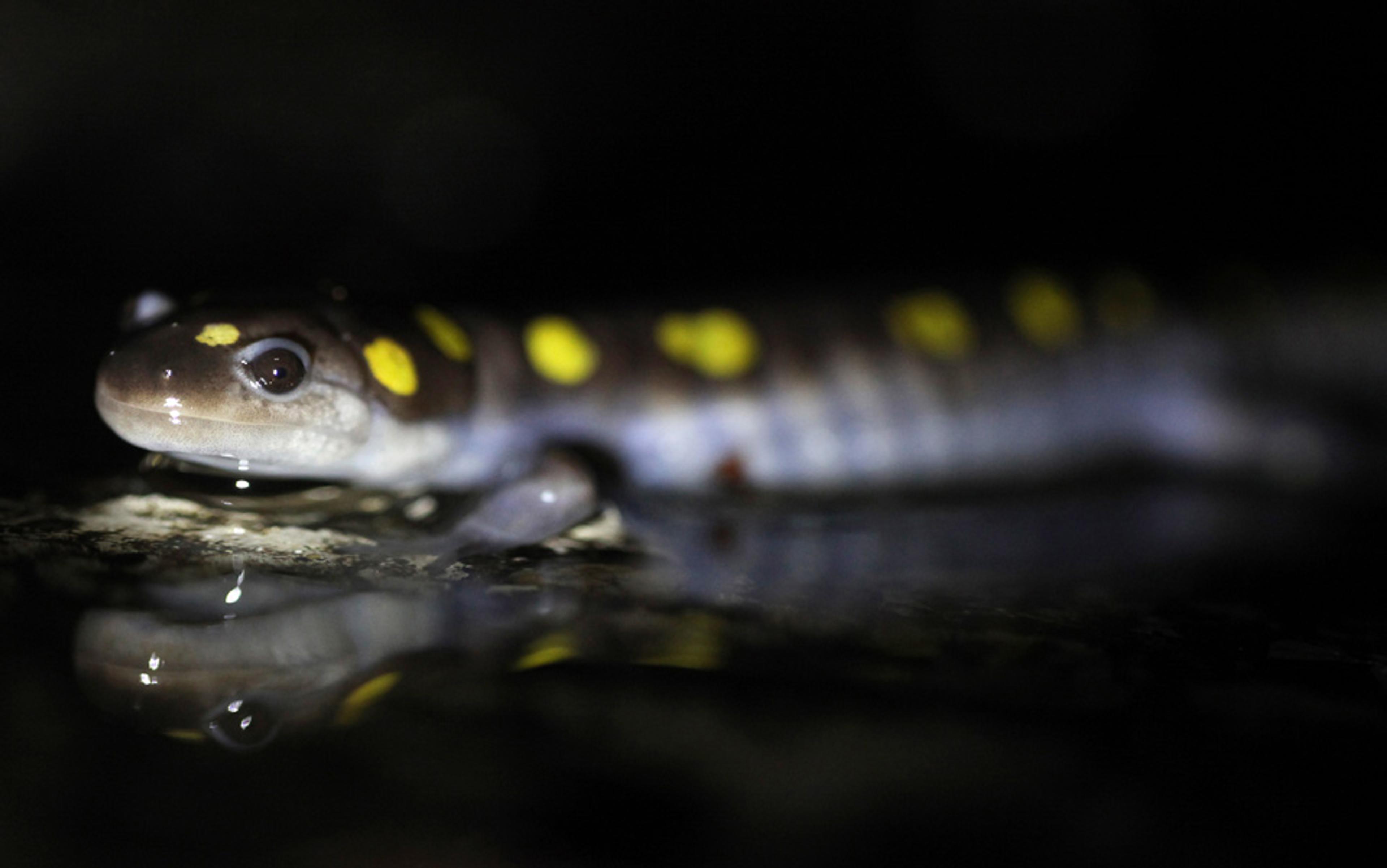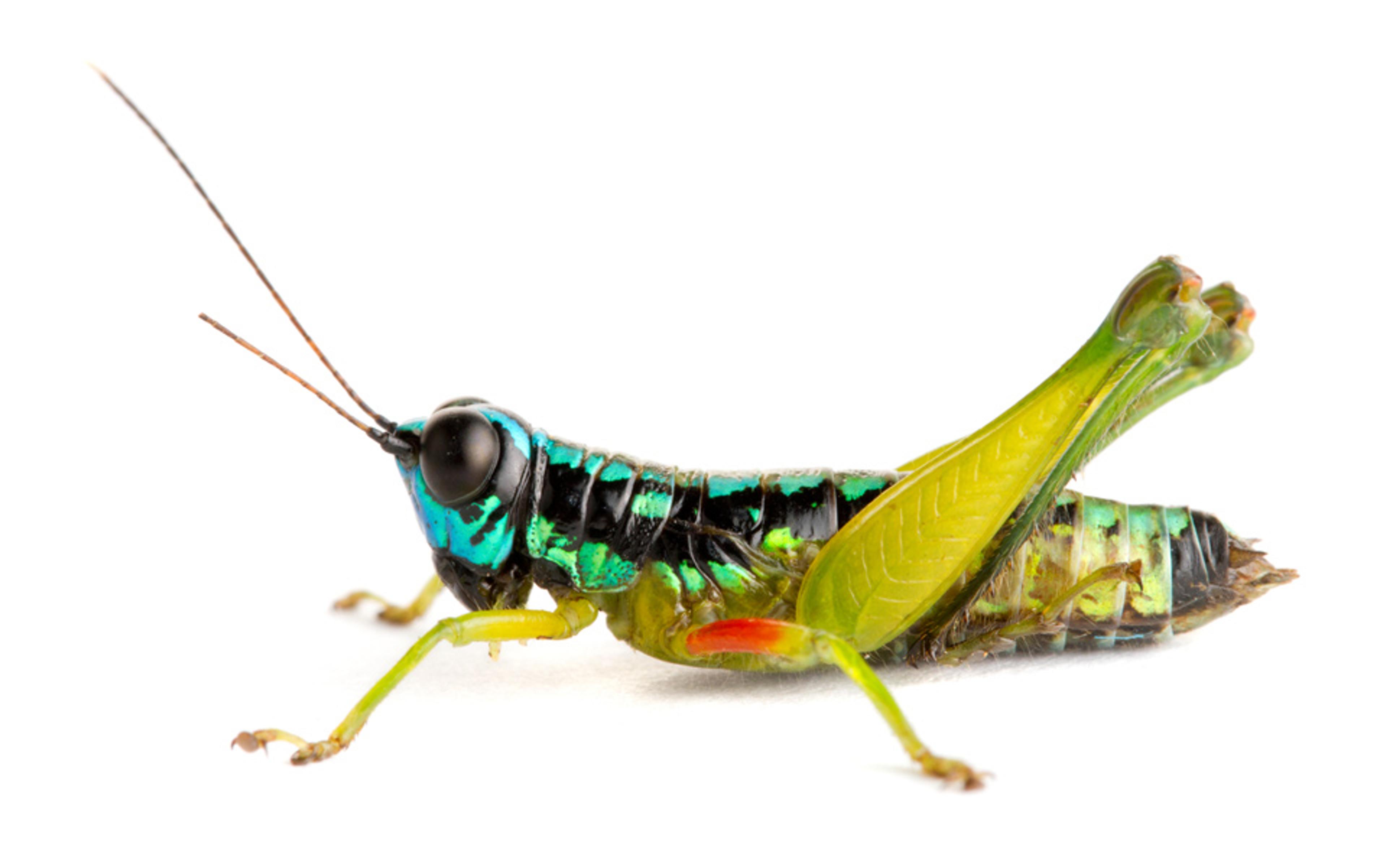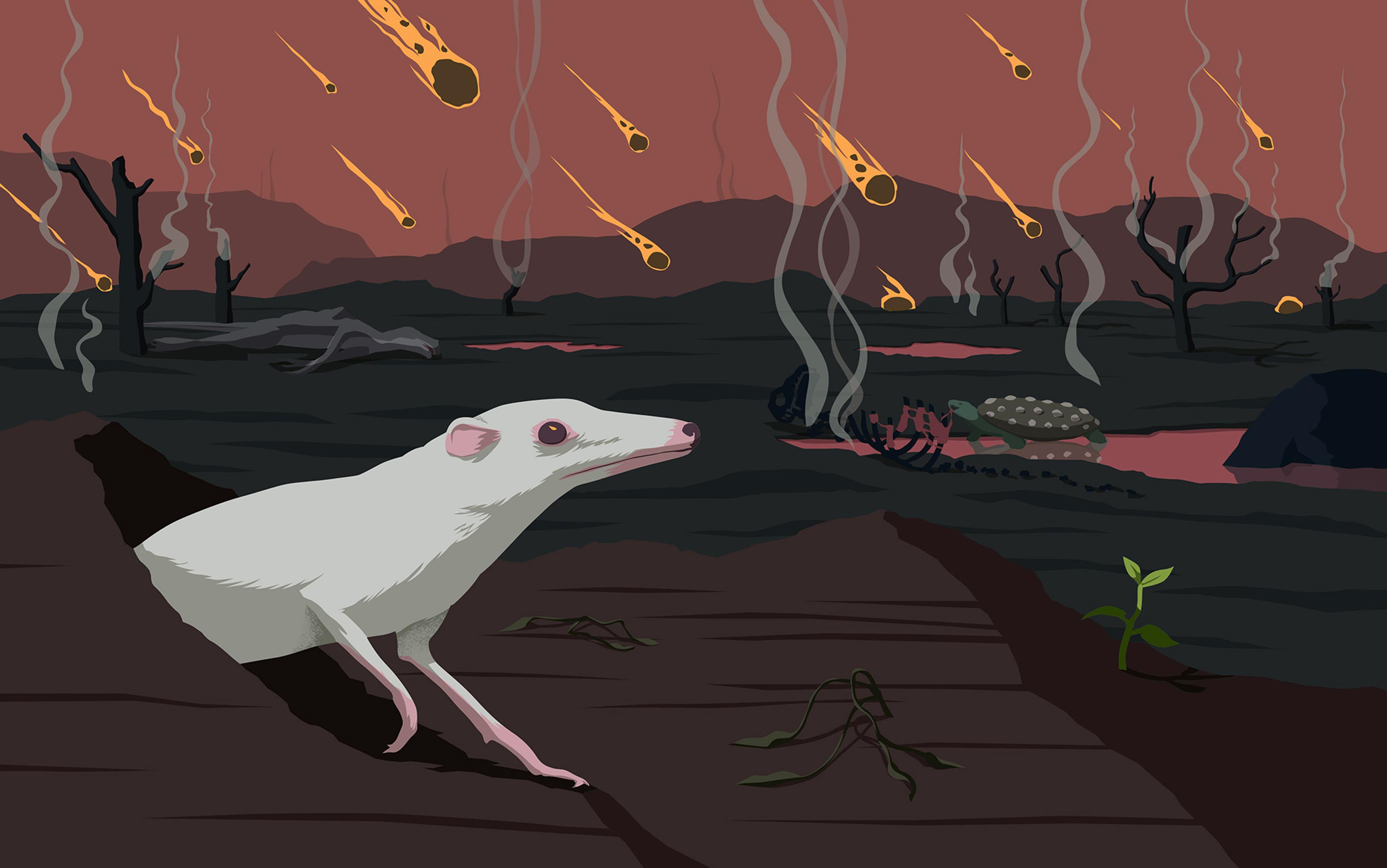When researchers at Emory University in Atlanta trained mice to fear the smell of almonds (by pairing it with electric shocks), they found, to their consternation, that both the children and grandchildren of these mice were spontaneously afraid of the same smell. That is not supposed to happen. Generations of schoolchildren have been taught that the inheritance of acquired characteristics is impossible. A mouse should not be born with something its parents have learned during their lifetimes, any more than a mouse that loses its tail in an accident should give birth to tailless mice.
If you are not a biologist, you’d be forgiven for being confused about the state of evolutionary science. Modern evolutionary biology dates back to a synthesis that emerged around the 1940s-60s, which married Charles Darwin’s mechanism of natural selection with Gregor Mendel’s discoveries of how genes are inherited. The traditional, and still dominant, view is that adaptations – from the human brain to the peacock’s tail – are fully and satisfactorily explained by natural selection (and subsequent inheritance). Yet as novel ideas flood in from genomics, epigenetics and developmental biology, most evolutionists agree that their field is in flux. Much of the data implies that evolution is more complex than we once assumed.
Some evolutionary biologists, myself included, are calling for a broader characterisation of evolutionary theory, known as the extended evolutionary synthesis (EES). A central issue is whether what happens to organisms during their lifetime – their development – can play important and previously unanticipated roles in evolution. The orthodox view has been that developmental processes are largely irrelevant to evolution, but the EES views them as pivotal. Protagonists with authoritative credentials square up on both sides of this debate, with big-shot professors at Ivy League universities and members of national academies going head-to-head over the mechanisms of evolution. Some people are even starting to wonder if a revolution is on the cards.
In his book On Human Nature (1978), the evolutionary biologist Edward O Wilson claimed that human culture is held on a genetic leash. The metaphor was contentious for two reasons. First, as we’ll see, it’s no less true that culture holds genes on a leash. Second, while there must be a genetic propensity for cultural learning, few cultural differences can be explained by underlying genetic differences.
Nonetheless, the phrase has explanatory potential. Imagine a dog-walker (the genes) struggling to retain control of a brawny mastiff (human culture). The pair’s trajectory (the pathway of evolution) reflects the outcome of the struggle. Now imagine the same dog-walker struggling with multiple dogs, on leashes of varied lengths, with each dog tugging in different directions. All these tugs represent the influence of developmental factors, including epigenetics, antibodies and hormones passed on by parents, as well as the ecological legacies and culture they bequeath.
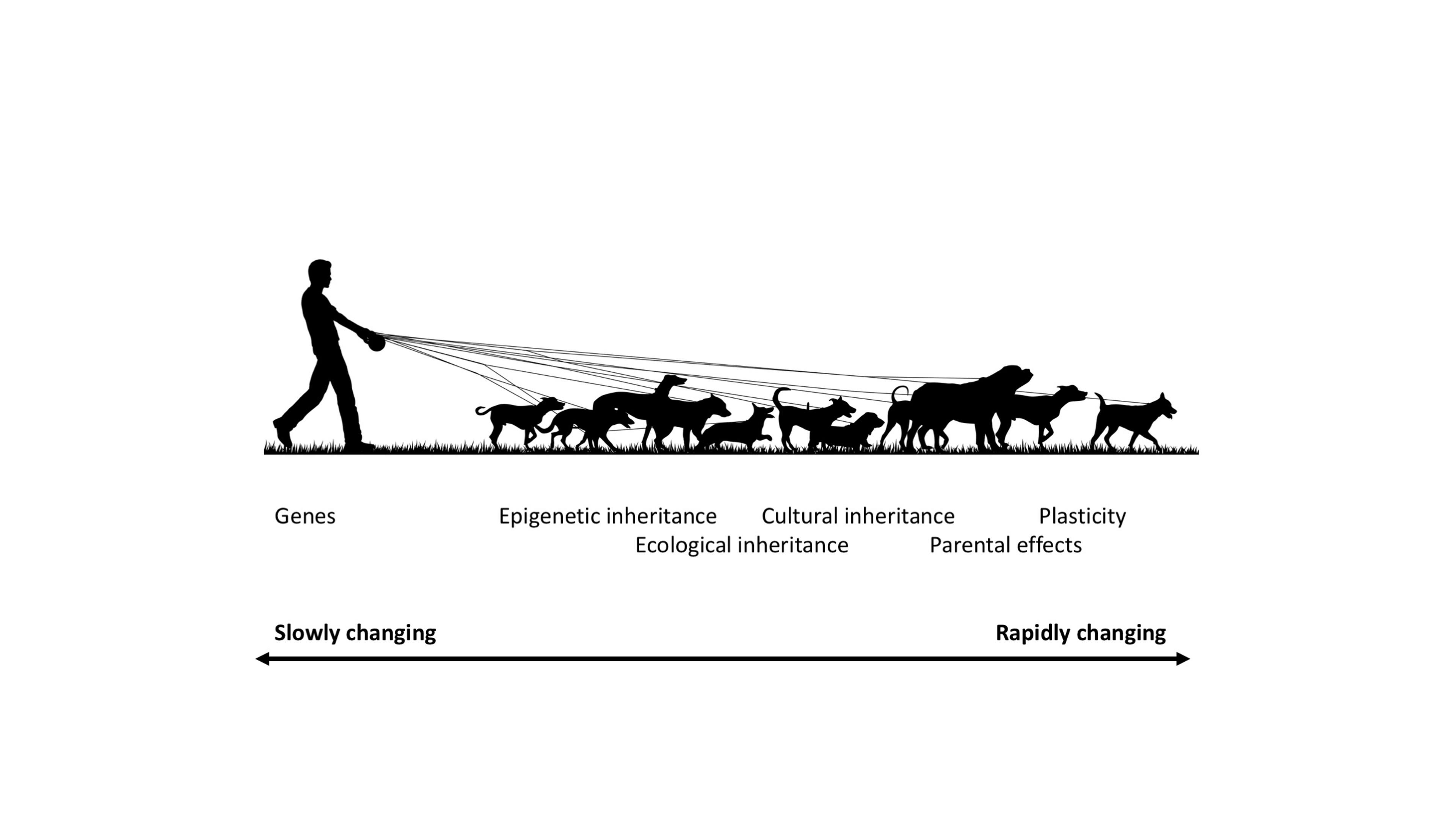
Image courtesy the author.
The struggling dog-walker is a good metaphor for how EES views the adaptive process. Does this require a revolution in evolution? Before we can answer this question, we need to examine how science works. The best authorities here are not biologists but philosophers and historians of science. Thomas Kuhn’s book The Structure of Scientific Revolutions (1962) popularised the idea that sciences change through revolutions in understanding. These ‘paradigm shifts’ were thought to follow a crisis of confidence in the old theory that arose through the accumulation of conflicting data.
Then there’s Karl Popper, and his conjecture that scientific theories can’t be proven but can be falsified. Consider the hypothesis: ‘All sheep are white.’ Popper maintained that no amount of positive findings consistent with this hypothesis could prove it to be correct, since one could never rule out the chance that a conflicting data-point might arise in the future; conversely, the observation of a single black sheep would decisively prove the hypothesis to be false. He maintained that scientists should strive to carry out critical experiments that could potentially falsify their theories.
Everything from diet to air pollution to parental behaviour can influence gene expression
While Kuhn and Popper’s ideas are well-known, they remain disputed and contentious in the eyes of philosophers and historians. Contemporary thinking in these fields is better captured by the Hungarian philosopher Imre Lakatos in The Methodology of Scientific Research Programmes (1978):
The history of science refutes both Popper and Kuhn: on close inspection both Popperian crucial experiments and Kuhnian revolutions turn out to be myths.
Popper’s arguments might make logical sense, but they don’t quite map on to how science works in the real world. Scientific observations are susceptible to errors of measurement; scientists are human beings and get attached to their theories; and scientific ideas can be fiendishly complex – all of which makes evaluating scientific hypotheses a messy business. Rather than accepting that our hypotheses might be wrong, we challenge the methodology (‘That sheep’s not black – your instruments are faulty’), dispute the interpretation (‘The sheep’s just dirty’), or come up with tweaks to our hypotheses (‘I meant domesticated breeds, not wild mouflon’). Lakatos called such fixes and fudges ‘auxiliary hypotheses’; scientists propose them to ‘protect’ their core ideas, so that they need not be rejected.
This sort of behaviour is clearly manifest in scientific debates over evolution. Take the idea that new features acquired by an organism during its life can be passed on to the next generation. This hypothesis was brought to prominence in the early 1800s by the French biologist Jean-Baptiste Lamarck, who used it to explain how species evolved. However, it has long been regarded as discredited by experiment – to the point that the term ‘Lamarckian’ has a derogatory connotation in evolutionary circles, and any researchers expressing sympathy for the idea effectively brand themselves ‘eccentric’. The received wisdom is that parental experiences can’t affect the characters of their offspring.
Except they do. The way that genes are expressed to produce an organism’s phenotype – the actual characteristics it ends up with – is affected by chemicals that attach to them. Everything from diet to air pollution to parental behaviour can influence the addition or removal of these chemical marks, which switches genes on or off. Usually these so-called ‘epigenetic’ attachments are removed during the production of sperm and eggs cells, but it turns out that some escape the resetting process and are passed on to the next generation, along with the genes. This is known as ‘epigenetic inheritance’, and more and more studies are confirming that it really happens.
Let’s return to the almond-fearing mice. The inheritance of an epigenetic mark transmitted in the sperm is what led the mice’s offspring to acquire an inherited fear. In 2011, another extraordinary study reported that worms responded to exposure to a nasty virus by producing virus-silencing factors – chemicals that shut down the virus – but, remarkably, subsequent generations epigenetically inherited these chemicals via regulatory molecules (known as ‘small RNAs’). There are now hundreds of such studies, many published in the most prominent and prestigious journals. Biologists dispute whether epigenetic inheritance is truly Lamarckian or only superficially resembles it, but there is no getting away from the fact that the inheritance of acquired characteristics really does happen.
By Popper’s reasoning, a single experimental demonstration of epigenetic inheritance – like a single black sheep – should suffice to convince evolutionary biologists that it’s possible. Yet, by and large, evolutionary biologists have not rushed to change their theories. Rather, as Lakatos anticipated, we have come up with auxiliary hypotheses that allow us to retain our long-held beliefs (ie, that inheritance is pretty much explained by the transmission of genes across generations). These include the ideas that epigenetic inheritance is rare, that it does not affect functionally important traits, that it is under genetic control, and that it is too unstable to underpin the spread of traits through selection.
Unfortunately for the traditionalists, none of these attempts to bracket epigenetic inheritance look credible. It is now known to be widespread in nature, with more and more examples appearing every day. It affects functionally important features such as fruit size, flowering time and root growth in plants – and while only a fraction of epigenetic variants are adaptive, that’s no less true of genetic variation, so it’s hardly grounds for dismissal. In some systems where rates of epigenetic change have been measured carefully, such as the plant Arabidopsis thaliana, the pace has been found to be low enough to be selected and lead to cumulative evolution. Mathematical models have shown that systems with epigenetic inheritance evolve differently from those solely reliant on genetic inheritance – for instance, selection on epigenetic marks can cause changes in gene frequencies. There’s no longer any doubt that epigenetic inheritance pushes us to think about evolution in a different way.
Epigenetics is only part of the story. Through culture and society, all of us inherit knowledge and skills acquired by our parents. Evolutionary biologists have accepted this for at least a century, but until recently it was considered to be restricted to humans. That’s no longer tenable: creatures across the animal kingdom learn socially about diet, feeding techniques, predator avoidance, communication, migration, and mate and breeding-site choices. Hundreds of experimental studies have demonstrated social learning in mammals, birds, fish and insects.
In a single mating season, ‘fads’ can develop in the qualities that individuals find attractive in their partners
Among the most compelling data are studies that cross-fostered great tits and blue tits. When raised by the other species, these birds shifted numerous aspects of their behaviour towards the behaviour of their foster parent (including the height in trees at which they foraged, their choice of prey, foraging method, calls and songs, and even their choice of mate). Everyone had assumed that the behavioural differences between these two species were genetic, but it turns out that many are cultural traditions.
Animal cultures can be sustained for surprisingly long periods. Archaeological remains show that chimpanzees have used stone tools to crack open nuts for at least 4,300 years. However, as for epigenetic inheritance, it would be a mistake to assume that animal culture must exhibit gene-like stability to be evolutionarily important. In the course of a single mating season, ‘fads’ can develop in the qualities that individuals find attractive in their partners; the process has been experimentally demonstrated in fruit flies, fish, birds and mammals, and mathematical models show that such ‘mate-choice copying’ can strongly affect sexual selection.
Another illustration comes from studies of birdsong. When young male birds learn their songs (usually from nearby adult males), they modify the natural-selection pressures of genes that affect how songs are acquired (in males) and which songs are preferred (in females). The cultural transmission of song is known to promote the evolution of brood parasitism – where birds, such as cuckoos, don’t make nests but lay eggs in other birds’ nests – as some brood parasites rely on cultural learning to figure out whom to mate with. It also facilitates speciation, since preferences for particular birdsong ‘dialects’ help to maintain genetic differences between populations.
Likewise, the diverse, culturally learned foraging traditions of orcas – where different groups specialise in particular types of fish, seals or dolphins – is thought to be driving them to split into several species. Of course, culture reaches its zenith in our own species, where it is now well-established that our cultural habits have been a major source of natural selection on our genes. Dairy farming and milk consumption generated selection for a genetic variant that increased lactase (the enzyme that metabolises dairy products), while starchy agricultural diets favoured increased amylase (the corresponding enzyme that breaks down starch).
All this complexity can’t be reconciled with a strictly genetic currency for adaptive evolution, as many biologists now acknowledge. Rather, it points to an evolutionary process in which genomes (over hundreds to thousands of generations), epigenetic modifications and inherited cultural factors (over several, perhaps tens or hundreds of generations), and parental effects (over single-generation timespans) collectively inform how organisms adapt. These extra-genetic kinds of inheritance give organisms the flexibility to make rapid adjustments to environmental challenges, dragging genetic change in their wake – much like a rowdy pack of dogs.
Despite the excitement of all the new data, it’s unlikely to trigger an evolution revolution for the simple reason that science doesn’t work that way – at least, not evolutionary science. Kuhnian paradigm shifts, like Popper’s critical experiments, are closer to myths than reality. Look back at the history of evolutionary biology, and you will see nothing that resembles a revolution. Even Charles Darwin’s theory of evolution through natural selection took approximately 70 years to become widely accepted by the scientific community, and at the turn of the 20th century was viewed with considerable skepticism. Over the following decades, new ideas appeared, they were critically evaluated by the scientific community, and gradually became integrated with pre-existing knowledge. By and large, evolutionary biology was updated without experiencing great periods of ‘crisis’.
The same holds for the present. Epigenetic inheritance does not disprove genetic inheritance, but shows it to be just one of several mechanisms through which traits are inherited. I know of no biologist who wants to rip up the textbooks, or throw out natural selection. The debate in evolutionary biology concerns whether we want to extend our understanding of the causes of evolution, and whether that changes how we think about the process as a whole. In this respect, what is going on is ‘normal science’.
Why, then, are traditionally minded evolutionary biologists complaining about the misguided evolutionary radicals that lobby for paradigm shift? Why are journalists writing articles about scientists calling for a ‘revolution’ in evolutionary biology? If nobody actually wants a revolution, and scientific revolutions rarely happen anyway, what’s all the fuss about? The answer to these questions provides a fascinating insight into the sociology of evolutionary biology.
Revolution in evolution is a misattribution – a myth propagated by an unlikely alliance of conservative-minded evolutionists, creationists and the press. I don’t doubt that there are a small number of genuine, revolutionarily minded evolutionary radicals out there, but the vast majority of researchers working towards an extended evolutionary synthesis are simply ordinary, hardworking evolutionary biologists.
We all know that sensationalism sells newspapers, and articles that portend a major upheaval make for better copy. Creationists and advocates of ‘intelligent design’ also feed this impression, with propaganda that exaggerates differences of opinion among evolutionists and gives a false impression that the field of evolutionary biology is in turmoil. What’s more surprising is how commonly conservative-minded biologists play the ‘We’re under attack!’ card against their fellow evolutionists. Portraying intellectual opponents as extremist, and telling people that they are being attacked, are age-old rhetorical tricks to win debate or allegiance.
I had always associated such games with politics, not science, but now realise I was naive. Some of the behind-the-scenes shenanigans I have witnessed, seemingly designed to prevent new ideas from spreading by fair means or foul, have truly shocked me, and are out of kilter with practice in other fields that I know. Scientists, too, have careers and legacies at stake, as well as struggles for funding, power and influence. I worry that the traditionalists’ rhetoric is backfiring, creating confusion and inadvertently fuelling creationism by exaggerating division. Too many reputable scientists feel the need for change in evolutionary biology for all to be credibly dismissed as fringe elements.
If the extended evolutionary synthesis is not a call for revolution in evolution, then what is it, and why do we need it? To answer these questions, we need to recognise what Kuhn got right – namely, that every scientific field possesses shared ways of thinking, or ‘conceptual frameworks’. Evolutionary biology is no different, and our shared values and assumptions influence what data is collected, how that data is interpreted, and what factors are built into explanations for how evolution works.
That is why pluralism in science is healthy. Lakatos stressed that alternative conceptual frameworks – what he called different ‘research programmes’ – can be valuable to the extent that they encourage new hypotheses to be generated and tested, or lead to novel insights. That is the primary function of the EES: to nurture, or even open up, new lines of enquiry, and new productive ways of thinking.
What if some ways of building a fish are just more probable than others?
A good example concerns what’s known as ‘developmental bias’. Consider the intriguing cichlid fishes of East Africa. For tens, perhaps hundreds, of the cichlid species in Lake Malawi, there exists an independently evolved, ‘duplicate’ species in Lake Tanganyika, with a strikingly similar body shape and way of feeding. Such likenesses are usually explained through convergent evolution: random genetic variation has bubbled up as usual, but similar environmental conditions have selected the genes to produce equivalent results. The way that organisms grow and develop might limit which traits arise, but the variation itself is assumed to be essentially random.
However, the extraordinary level of parallel evolution seen in these two lakes suggests that something else might be going on. What if some ways of building a fish are just more probable than others? What if trait variation skews towards certain solutions? Selection would still be part of the explanation, but parallel evolution would be much more likely.
Cheek teeth (molars) in mammals provide some of the most convincing data for bias. Studies show that it’s possible to use a mathematical model, based on laboratory mice, to predict the size and number of teeth in a sample of 29 other rodent species. Rather than being free to make any shape or number of teeth, it appears that natural selection is pushing species along a highly specific pathway created by the mechanisms of development. The existence of exceptions – rodents such as voles with different ratios of teeth – demonstrates that the old way of thinking (that developmental ‘constraints’ restrict selection) isn’t quite right. The effect of development is both more subtle and more interesting: developmental mechanisms bias the landscape for selection, and help to determine which features evolve.
Such studies are exciting as they help to make evolutionary biology a more predictive science. Why, then, have these ideas received comparatively little attention until recently? We come back to conceptual frameworks. Historically, evolutionary biologists have treated bias in phenotypic variation as a ‘constraint’ – an explanation for why evolution or adaptation has not occurred. The way that organisms grow restricts what sorts of features it is possible or adaptive to possess. Traditionally minded evolutionists have been far more reticent to embrace a positive role for development as a cause of evolutionary direction and change.
It took a different perspective (in this instance, that of evolutionary developmental biology, so-called ‘evo devo’), to motivate this kind of experimentation. From the evo-devo perspective, bias partly explains what evolution and adaptation has occurred. Rodents’ teeth and fishes’ bodies look the way they do because the way that creatures grow makes those characteristics more likely to arise. Bias thus becomes a much more significant concept in evolutionary explanation. By bringing the phenomenon to the fore, the EES hopes it will be investigated.
The EES, at least as my collaborators and I frame it, is best viewed as an alternative research programme for evolutionary biology. Inspired by recent findings emerging within evolutionary biology and adjacent fields, the EES starts from the assumption that developmental processes play important roles as causes of novel (and potentially beneficial) phenotypic variation, causes of differences in fitness of those variants, and causes of inheritance. In contrast to how evolution has traditionally been conceived, in the EES the burden of creativity in evolution does not rest on natural selection alone. This alternative way of thinking is being used to generate fresh hypotheses and establish new research agendas. It’s early days, but there are already signs that this research is starting to yield dividends.
If evolution is not to be explained solely in terms of changes in gene frequencies; if previously rejected mechanisms such as the inheritance of acquired characteristics turn out to be important after all; and if organisms are acknowledged to bias evolution through development, learning and other forms of plasticity – does all this mean a radically different and profoundly richer account of evolution is emerging? No one knows: but from the perspective of our adapting dog-walker, evolution is looking less like a gentle genetic stroll, and more like a frantic struggle by genes to keep up with strident developmental processes.
